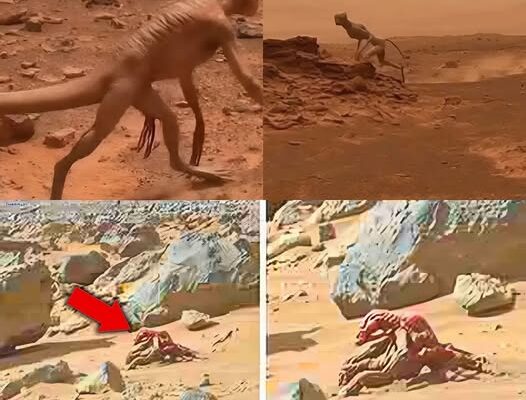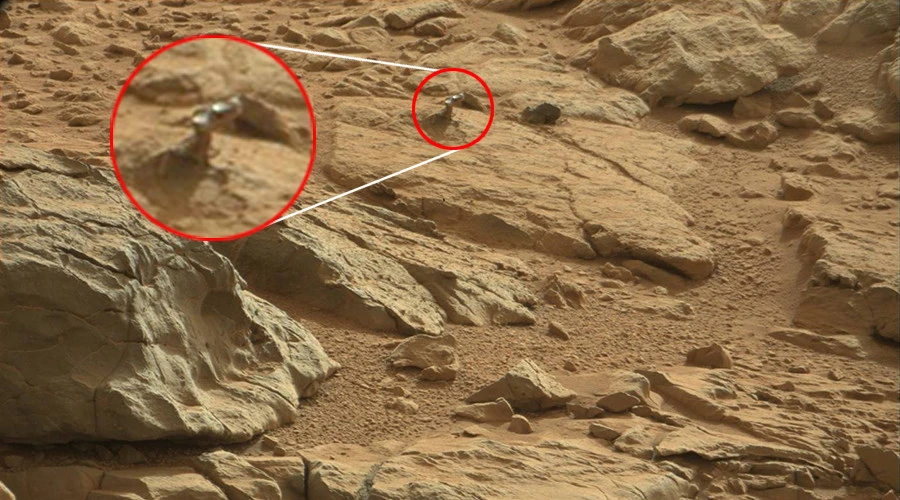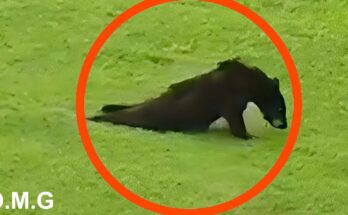In a discovery that has ignited both excitement and disbelief across the globe, NASA scientists have confirmed that a Mars rover captured footage of what appears to be a moving, living object on the Martian surface.
The revelation came not from a planned announcement, but from an internal review session earlier this week, when a research technician noticed a faint, shifting shape in the background of footage taken by the Ares-9 robotic explorer.
“At first, we thought it was just a dust shadow,” said Dr. Leila Hammond, the mission’s imaging specialist. “But when we enhanced the footage, it became clear — the object moved independently, and against the wind.”
The Discovery
The segment in question was recorded near the Erebus Vallis region, a rocky canyon network roughly 200 miles southeast of Olympus Mons. The Ares-9 rover had paused its geological survey when one of its rear cameras captured a dark, irregular form crossing the terrain roughly 20 meters behind it.
The object appeared to stop, turn slightly toward the rover, and then vanish behind a ridge.
“It wasn’t random movement,” said Dr. Hammond. “There was a moment — a pause — like it was observing.”
What Could It Be?
NASA’s official statement urges caution, emphasizing that the footage is still under analysis and could have a non-biological explanation. Possible theories include:
Shifting shadows from dust plumes or uneven terrain.
Camera artifacting caused by radiation interference.
Wind-driven debris moving at unusual angles due to localized magnetic fields.
Yet, some scientists admit the behavior captured doesn’t neatly fit any of those explanations.
“Mars is still a place of surprises,” said Dr. Raymond Cho, an astrobiologist with the Mars Life Initiative. “If this proves to be organic movement — even microbial or insect-like — it would change everything we know about life beyond Earth.”
Data Under Lockdown
Following the discovery, NASA temporarily restricted access to the raw footage, citing the need for “data integrity and verification.” However, internal sources report that multiple frames have already been leaked to international research teams for secondary analysis.
Within hours, independent astrophotographers began enhancing publicly available images, pointing to what some claim are “limb-like extensions” visible in frame 147B of the video sequence.
“It’s subtle, but it’s there,” said Dr. Amir Patel, a robotics engineer who reviewed the sequence. “You can see the reflection change as if something biological moved across the sand.”
Global Reactions
As word spread, social media erupted under the hashtag #MarsCreature. Millions watched slowed-down versions of the clip, debating whether the form resembled an animal, a machine — or an optical illusion.
Theories range from a new type of mineral formation to an unknown rover malfunction, while others suggest something far more extraordinary.
Meanwhile, NASA has announced that Ares-9 will revisit the location within the next 72 hours to perform detailed scans and soil sampling.
“We’re going back,” confirmed Mission Director Elena Moore. “Whatever it was, we’re not looking away.”
A Turning Point in Space Exploration?
If confirmed as biological, this would represent the first direct observation of extraterrestrial life in human history. But even skeptics admit the timing is uncanny — just weeks after the rover’s instruments detected unexpected methane spikes and heat signatures in the same region.
“We may be witnessing the most important moment in planetary science since the Apollo landings,” said Dr. Cho. “Or, we may be staring at a trick of light on a lonely planet. Either way, we have to know.”
The Next 72 Hours
Ares-9’s autonomous navigation system is already recalibrated for a return to the site. High-resolution imaging, spectrometry, and thermal readings are expected to begin at 03:00 UTC Friday.
Until then, the world watches — waiting to learn whether Mars just blinked back at us.
Editor’s Note:
This story is a work of science fiction, written in the style of a breaking-news feature. It does not describe real NASA findings or events.






